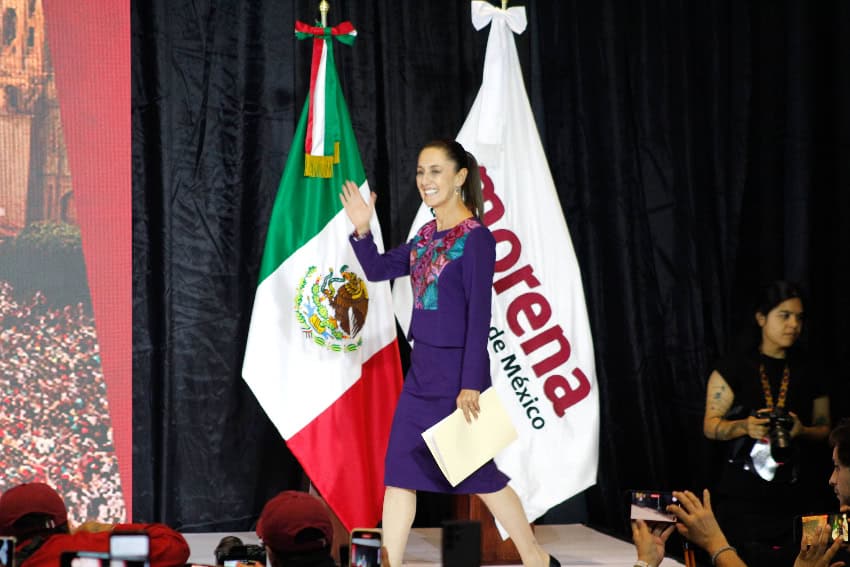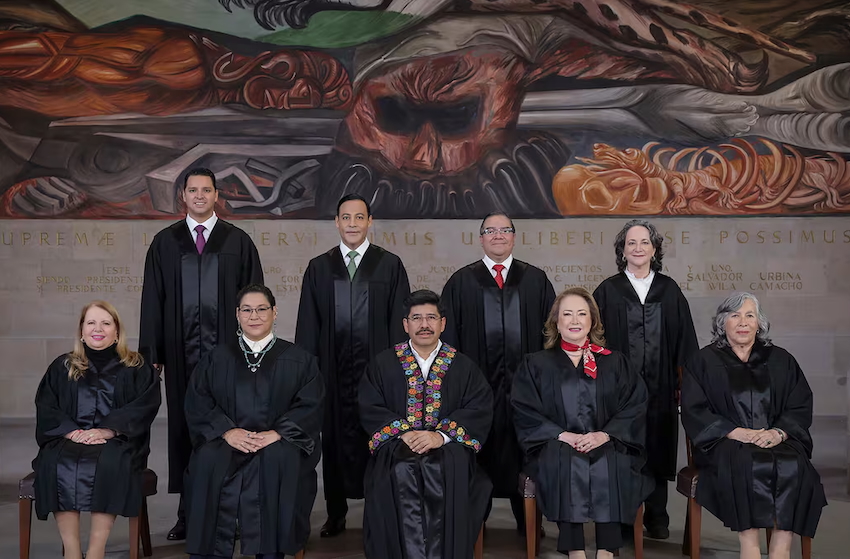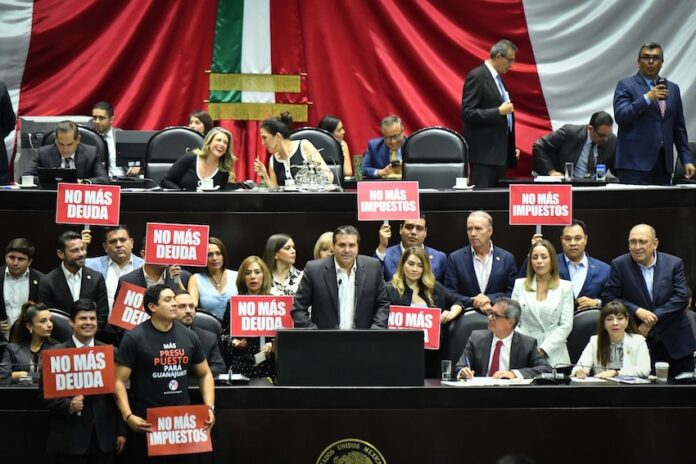When Claudia Sheinbaum stood on the balcony of the National Palace last month to preside over Mexico’s Independence Day ceremony, the importance of the moment was unmistakable: She was the first woman to hold the presidency, commanding broad support, and her governing party, Morena, has consolidated near-total legislative power in Mexico.
One year into her presidency, the former Mexico City mayor has not only secured a level of political authority that her detractors had questioned, but has also benefited from something else: the disappearance of any meaningful political opposition. Her sweeping electoral win last year also delivered Morena control of both chambers of government, leaving the longstanding parties that once dominated Mexican politics in tatters.

Mexico’s political opposition parties
Sheinbaum, formerly mayor of Mexico City, rose on a wave of support for outgoing president Andrés Manuel López Obrador’s so-called “Fourth Transformation” of Mexican society. The Institutional Revolutionary Party (PRI) failed, for the first time since its 20th-century heyday, to produce a viable presidential candidate. The center-right National Action Party (PAN) fractured under ideological and leadership disputes, while its candidate, former senator Xóchitl Gálvez — once a strong opposition bet — saw her campaign unravel in the face of the internal divisions. Another contender, Nuevo León Governor and Citizens’ Movement party candidate Samuel García, withdrew early.
Mexico’s opposition parties, though weakened, represent a range of ideological positions that contrast with the ruling Morena party’s leftist populism. The PAN stands for market-oriented reforms, rule of law and a blend of social and Christian democratic values, emphasizing private enterprise and security.
The PRI, historically centrist, now leans toward moderate economic liberalization and a pragmatic, big-tent approach, trying to uphold stability and incremental reform.
Movimiento Ciudadano (MC), the most dynamic of the new opposition, promotes social democracy, progressive reforms and transparent governance.
However, all three have struggled to offer a compelling alternative to Morena’s broad social spending policies, its anticorruption narrative and its “the poor come first” stance.
The parties’ recent attempts at forming coalitions have been undermined by internal divisions, a failure to mount charismatic leadership, and widespread, enduring public trust in Morena’s promise of transformation.
The populism is coming from the left

The marginalization of Mexico’s opposition is not only about personalities or parties. The country’s political culture heavily encourages moderation. Polling from the Latin American Public Opinion Project shows that 51% of Mexicans self-identify as centrist, a far higher share than those identifying with either the left or right. This broad center complicates any attempt to build the sort of polarized, anti-elite right-wing movement seen in other Latin American countries.
The PRI’s historical role as a big-tent party, which absorbed diverse ideologies and smoothed out regional divides, helped create a system with less of the urban-rural and secular-religious tensions seen elsewhere. Even figures attempting a populist, rightward challenge — like celebrity activist Eduardo Verástegui — failed to resonate. Verástegui’s campaign, which borrowed tactics from both Donald Trump and Brazilian right-wing populist Jair Bolsonaro, quickly floundered amid controversy, but mostly due to a lack of mainstream appeal.
Meanwhile, Sheinbaum, like AMLO before her, has managed to co-opt many traditional conservative constituencies. Both their governments have paired progressive social rhetoric with commitments to family and tradition, making them hard targets for the opposition to exploit — especially as her political rivals often also endorse similar social policies, albeit with a less progressive bent.
Morena itself is a broad coalition
Mexico’s electoral rules add another layer of resistance to fragmentation. The country does not employ second-round runoffs, which compels parties to campaign for wide coalitions instead of betting on polarizing or fringe platforms. This dynamic pushes most mainstream figures to the political middle, further depriving right-leaning populists of electoral oxygen.
But Morena’s dominance is not merely a repeat of the old PRI big-tent machine.
Morena has blended AMLO’s tried-and-true methods — such as state-directed spending and ties to local power brokers who control — with left-populist rhetoric for a new era. Many former PRI members and political elites have migrated to Morena, pragmatically following power and opportunity. For now, Morena appears to have stitched together a stable coalition able to withstand elite defections and internal rivalries.

AMLO’s reforms have cemented Sheinbaum’s position
While Sheinbaum has proved popular in the polls — and with the man on the street — there is an elephant in the National Palace that the new president has benefitted from immensely.
While AMLO’s presidency was generally well received by working-class Mexicans, his sweeping reforms of the military, police and legislative systems has provided a platform that allows Morena and its allies to disarm political opposition.
The recent (and highly controversial) judicial reforms have bolstered her ability to pass controversial legislation, as Sheinbaum’s popularity with the public has allowed the election of key allies to the Supreme Court, at the expense of Mexico’s more traditional conservative justices and institutions.
Supporters of the reform claim it establishes a more authentic rule of law and democratizes justice. Detractors express concern that the changes favor one-party dominance and could damage investor trust and Mexico’s trade relations, particularly with the United States and Canada. The reforms have sparked significant controversy, including nationwide strikes by judicial workers and sharp public debate over the best path for Mexico’s legal future.
The defanging of both the National Electoral Institute (INE) and the National Institute for Transparency, Access to Information and the Protection of Personal Data (INAI) have also limited the number of bureaucratic tools that Mexico’s opposition parties have at their disposal when looking to act against the current government.
Observers caution that such an overwhelming concentration of power — amid weak checks and modest political pluralism — could breed its own long-term perils. Questions about judicial independence, institutional resilience and the prospect of meaningful opposition continue to animate debate in more affluent areas of Mexico, where Morena is less popular.
What’s next?
Mexico’s present, at least, is defined by Sheinbaum’s remarkable mandate. The scale of her victory and the collapse of her rivals mark a resounding victory not just for her personally, but for a pragmatic, technocratic left that, for now, faces little organized dissent.
If and when a new challenger emerges — left, right or otherwise — they will have to confront a system fundamentally altered by Morena’s ascent, and a political center that has, so far, proven remarkably durable in the face of global populist tides.
Chris Havler-Barrett is the Features Editor at Mexico News Daily
